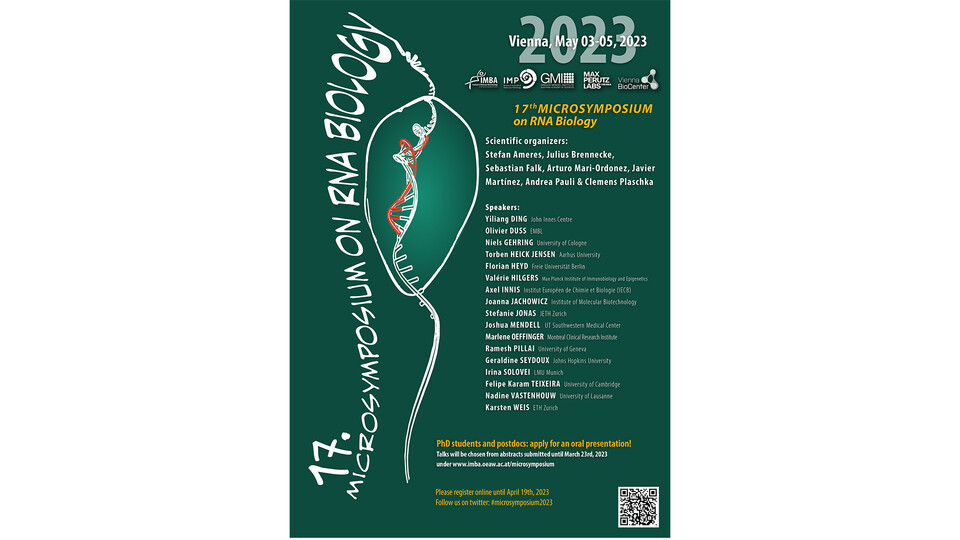
In all three eukaryotic kingdoms, small regulatory RNAs play a key role in the silencing of gene expression at the post-transcriptional and the transcriptional level. They have central functions in the repression of viruses and transposons and they play essential roles in coordinating organismal development, physiological processes and human diseases, such as cancer.
To strengthen the focus on the new generation of scientists, the Microsymposium invites—besides established leaders in the field— postdocs and PhD students (selected from submitted poster abstracts) as speakers. This allows the up-and-coming scientists to present their projects and results to a highly qualified, engaged and dynamic audience and is a major distinguishing factor from other conferences.
Yiliang DING, John Innes Centre
Olivier DUSS, EMBL
Niels GEHRING, University of Cologne
Torben HEICK JENSEN, Aarhus University
Florian HEYD, Freie Universität Berlin
Valérie HILGERS, Max Planck Institute of Immunobiology and Epigenetics
Axel INNIS, Institut Européen de Chimie et Biologie (IECB)
Joanna JACHOWICZ, Institute of Molecular Biotechnology
Stefanie JONAS, ETH Zurich
Joshua MENDELL, UT Southwestern Medical Center
Marlene OEFFINGER, Montreal Clinical Research Institute (IRCM)
Ramesh PILLAI, University of Geneva
Geraldine SEYDOUX, Johns Hopkins University
Irina SOLOVEI, LMU Munich
Felipe Karam TEIXEIRA, University of Cambridge
Nadine VASTENHOUW, University of Lausanne
Karsten WEIS, ETH Zurich
Stefan Ameres (Max Perutz Labs)
Julius Brennecke (IMBA)
Sebastian Falk (Max Perutz Labs)
Arturo Marí-Ordóñez (GMI)
Javier Martínez (Max Perutz Labs)
Andrea Pauli (IMP)
Clemens Plaschka (IMP)
For more information and registration visit: https://www.oeaw.ac.at/imba/seminars-events/microsymposium
Abstract submission to be considered for a talk from abstract: March 23
Registration deadline & deadline for poster presenters: April 19